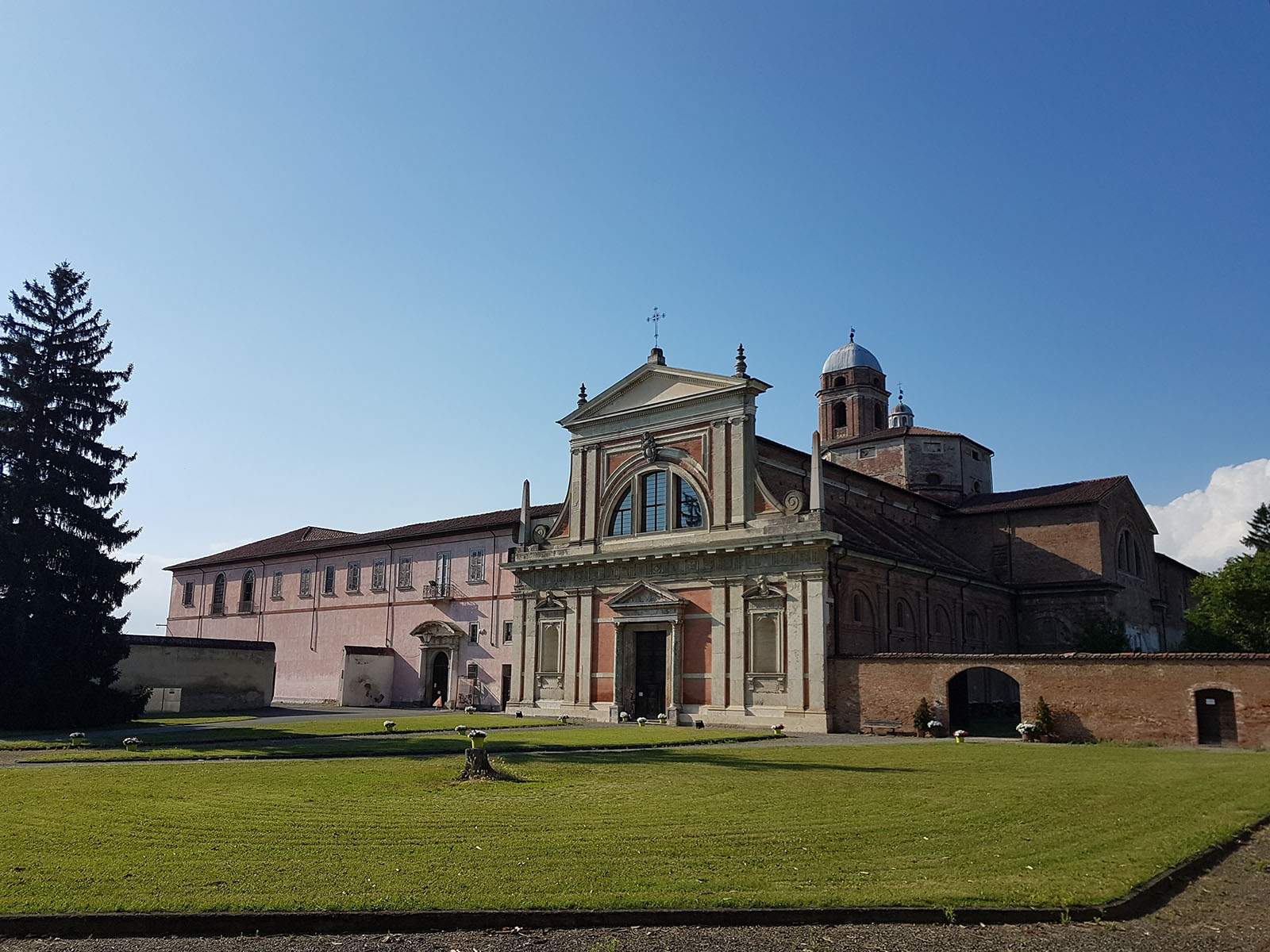The city of Alexandria is celebrating the 450th anniversary of the passing of Pope Pius V, born Antonio Ghisleri (Bosco Marengo, 1504 - Rome, 1572), with a new display at the Complex of Santa Croce in Bosco Marengo, which will be inaugurated on Thursday, July 7. The complex was built at the very initiative of the pope, who also had it decorated by Giorgio Vasari (Arezzo, 1511 - Florence, 1574) with the grandiose “Vasarian Machine.”
Pius V is so far the only pope of Piedmontese origin and was a great lover of art and culture. His figure is linked to the establishment of the Holy League and the victorious Battle of Lepanto (1571). He was beatified in 1672 by Pope Clement X and canonized on May 22, 1712 by Pope Clement XI. A native of Bosco Marengo (near Alessandria), he built, as anticipated, Santa Croce di Bosco, one of the most important monumental complexes of 16th-century Italy. A cultural-historical project that from Thursday, July 7, with the opening at 4 p.m. of the new museum display at the monumental complex of Santa Croce, with 56 restored works (including ten by Vasari), will allow people to remember this great figure, re-evaluate his thought and work. In Lives, Vasari describes the Macchina Vasariana in Santa Croce as “... una machina grandissima quasi a guisa d’arco trionfale, con due tavole grandi, una dinanzi et una di dietro, et in pezzi minori circa trenta storie piena di molte figure che tutte sono a bonissimo termine condotte”: this was the grandiose altar designed at the behest of Pope Pius V.
In 1710 the altar was dismembered and replaced by the present marble one. Today, the main panel depicting the Last Judgment is preserved in the apse of the church along with two other panels with Dominican saints, while the remaining paintings are displayed in the adjoining museum. The paintings were made between 1567 and 1569 in Florence, sent to Pisa, then by sea to Genoa and from there to Bosco Marengo, where they arrived at the end of August 1569; in the meantime, the monumental altar structure by the Florentine Giovanni Gargioli was built in Bosco to Giorgio Vasari’s design. The main panel of the Last Judgment is signed by Giorgio Vasari while the other panels are attributed to painters from his workshop including Francesco Morandini known as “Il Poppi,” Jacopo Zucchi and Giovanni Battista Naldini.
The monumental complex of Santa Croce ranked second in the eighth edition of the census “I Luoghi del Cuore,” promoted by FAI (Fondo Ambiente Italiano) in 2016. Thanks to of this result, the FAI has allocated a contribution of 40 thousand euros, which has been earmarked for the completion of the installation. The project involves the creation of a new museum, in which the exhibition route and an immersive experience that will develop among the works of the reunited artistic collection, in order to guide the visitor in the discovery of a place of great historical and cultural value and can immerse himself in the narration of events and characters told also with the help of modern audiovisual and interactive media.
Among the “artistic” merits of Pope Pius V is then also the commission of the Miniati Chorals, precious choir books that today are preserved in the Civic Museum of Alexandria. There were originally 42 examples, commissioned in Rome by Pope Pius V for Santa Croce di Bosco Marengo. The civic-owned collection consists of 36 original volumes and 6 duplicates. After the Bosco Marengo Convent was suppressed in 1873, the chorals were hidden in a disguised dressing room. In 1893 they were shipped to the Convent of the Preaching Fathers in Chieri, but intercepted they were seized and assigned to the City of Alexandria. The “beautiful figures in miniature and highly esteemed” are traced back to Julius Clovius, but matrix influences and different cultures, Nordic Flemish and Lombard, are also noted. The City of Alexandria, in anticipation of the papal anniversary, has agreed to the proposal to carry out a diagnostic study, through non-invasive spectroscopic analysis, on the civically owned illuminated Chorals of St. Pius V kept in Palazzo Cuttica.
“Those who visit Alessandria,” stresses Alessandria Mayor Gianfranco Cuttica di Rovigliasco, “will also be able to admire the marvelous illuminated Chorals, commissioned by Pope Pius V and kept at the Palazzo Cuttica Museum. A collection in itself prestigious and which has recently been the subject of an excellent action aimed at full digitization. Then there is the realization of a series of video-maps dedicated to the historical-identitary elements of Alexandria that will not fail to enhance St. Pius V as well.”
 |
| Alexandria, a new layout for Santa Croce and restorations for Vasari's masterpieces |
Warning: the translation into English of the original Italian article was created using automatic tools. We undertake to review all articles, but we do not guarantee the total absence of inaccuracies in the translation due to the program. You can find the original by clicking on the ITA button. If you find any mistake,please contact us.